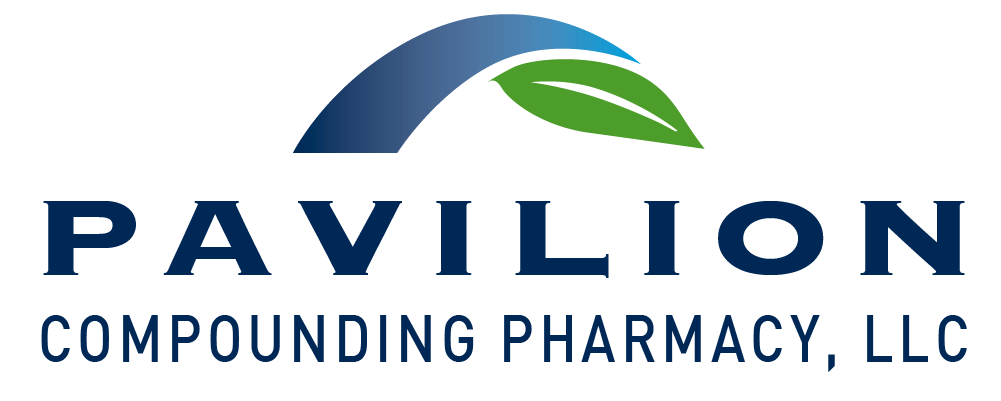Atopic dermatitis (AD) is the most common reason for dog owners to visit their local veterinary clinic. According to Veterinary Practice News, it is one of the top 10 reasons that cat owners visit their local veterinary clinic as well. AD also affects other species, such as horses and ferrets. Continue reading to learn more about Atopic Dermatitis treatment options through the use of compounding.
What is Atopic Dermatitis?
AD is an inflammatory, pruritic, allergic skin disease characterized by a hypersensitivity reaction of the skin to causative agents found in the environment of the animal.1 These “triggers,” or allergens, can be present in the air – in the case of dust and pollen – in food or in grooming products, similarly to the triggers that we find in human patients.
Usually, there is a genetic predisposition to AD, and in dogs, there are several breeds that are prone to this condition: Chinese Shar-Pei, Wirehaired Fox Terrier, Golden Retriever, Dalmatian, Boxer, Boston Terrier, Labrador Retriever, Lhasa Apso, Scottish Terrier, Shih Tzu, and West Highland White Terrier.1 Compromise of the normal barrier function of the skin can also occur in many animals secondary to licking and biting of the affected areas.
Atopic Dermatitis Treatment Options
The main goal of treatment is to alleviate pruritus in order to allow the skin to heal appropriately. The first measure of treatment is to remove any allergens that may be the causative agents. Removing certain things from the animal’s diet, such as grains, can many times help reverse the process. Environmental allergens, such as pollens, sometimes are not as easy to remove, and measures have to be taken to prevent reactions to them by the immune system.
Atopic Dermatitis treatment can be initiated in several different ways. In many cases, veterinarians will treat atopy with systemic medications such as Apoquel® (oclacitinib), a Janus kinase inhibitor used in canines. Atopica® (cyclosporine, modified), a calcineurin inhibitor, is another agent used in canines and felines for treatment of atopy. These medications work well for many patients.
However, the cost can be a major reason why owners may not initiate or comply with the use of these two oral medications. Additionally, Apoquel has a history of being unavailable for periods of time, which is a frustration for veterinarians. Barriers to oral administration, such as biting, clawing, scratching or hiding, can also be an issue with the administration of these medications.
Compounding Ideas for Atopic Dermatitis
Pavilion Compounding Pharmacy can be a huge aid to the patient and the veterinarian by offering alternative dosage forms, ingredients, and bases that offer advantages in these cases. Apoquel tablets can be compounded into a fixed oil suspension formula to aid in administration. In cases where a more concentrated solution of cyclosporine is needed to aid administration, Cyclosporine 20% Oral Solution is a good option.
Topical medications can be used to treat AD either alone or in conjunction with the two previously mentioned chemicals as well. Creams, gels, ointment and shampoos are the various dosage forms that can be used. However, one major issue with using creams, gels, and ointments is they mat the fur and make it greasy and sticky when applied. This is very undesirable for many owners, especially those with show animals where appearance is extremely important. Pavilion Compounding Pharmacy can reformulate these products for the veterinarian using a base that soothes skin and does not mat the fur, such as PCCA ZoSil™.
ZoSil is a silicone hydrogel base designed specifically for animal skin. It is rich in fatty acids, such as omega 3, omega 6 and conjugated linoleic acid. It also contains shea butter and hyaluronic acid. ZoSil uses Smart Diffusion Technology™ to release these ingredients, which are important in soothing and moisturizing, and help improve the appearance of red, flaky and irritated skin. The Smart Diffusion Technology works by encapsulating the previously mentioned ingredients in microscopic spheres that open in the presence of lipases and phospholipidosis normally released by the inflammatory response of the skin. However, Smart Diffusion Technology also works in the absence of inflammation as well, as the spheres open over time in the absence of the enzymes.
This combination of ingredients nourishes the skin and makes it a great choice in formulations for veterinary patients experiencing AD. And APIs such as antibiotics, antifungals, anti-inflammatories, anesthetics, antiseptics, and mast-cell stabilizers can be used in formulations with ZoSil.
Naltrexone is one ingredient that may be helpful in patients experiencing AD. In a study in the Journal of the American Veterinary Medical Association, canine patients were successfully treated with oral naltrexone for acral lick granulomas that were a result of atopy. The licking behavior may be reinforced by a decrease in pain perception due to the release of endogenous opioids. The theorized mechanism of action is that the naltrexone blocked the release of endogenous opioids, which increased the perception of pain and abated the licking behavior.2 Naltrexone may be used topically in this same manner.
Tranilast, a mast-cell stabilizer, is also a good option. It may be used orally or topically. The usual oral dosage is 1-2 mg/kg BID. In cases where the skin barrier has been compromised and infection has set in, antibiotics and antifungals may be used as well. APIs that address itching and inflammation may also be helpful.
Formulas to Consider
• Naltrexone HCl 1% Topical Gel (ZoSil) (Vet)
• Tranilast 1% Topical Gel (ZoSil) (Vet)
• Nystatin 100,000 U/Gm/Neomycin 2.5mg/Gm/Bacitracin 400 U/ Gm/Triamcinolone 1 mg/Gm Topical Ointment (ZoSil) (Vet)
• Itraconazole 1% Topical Gel (ZoSil) (Vet)
• Gentamicin 1% Topical Gel (ZoSil) (Vet)
• Pramoxine HCl 1% Topical Gel (ZoSil) (Vet)
• Diphenhydramine HCl 2%/Tranilast 1% Topical Gel (ZoSil) (Vet)
• Triamcinolone Acetonide 0.015% Topical Gel (ZoSil) (Vet)
• Hydrocortisone 1% Topical Gel (ZoSil) (Vet)
About Pavilion Compounding
Contact Pavilion Compounding Pharmacy today for more information about Atopic Dermatitis treatment options! Our pharmacists will work with you and your veterinarian to create the best treatment option for your furry friend.
Click here to read more about our veterinarian services.
REFERENCES
1. Moriello, K. A. (n.d.). Overview of atopic dermatitis. Merck Veterinary Manual. Retrieved from http://www.merckvetmanual. com/integumentary-system/atopic-dermatitis/overview-of-atopicdermatitis
2. White, S. D. (1990). Naltrexone for treatment of acral lick dermatitis in dogs. Journal of the American Veterinary Medical Association, 196(7), 1073-1138.
3. PCCA MARCH 2017 APOTHAGRAM By Deborah Clark, BSPharm, RPh, PCCA Pharmacy Consultant



